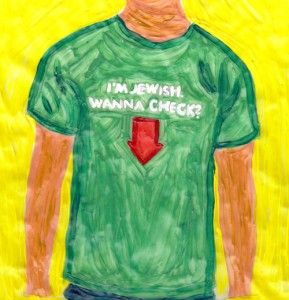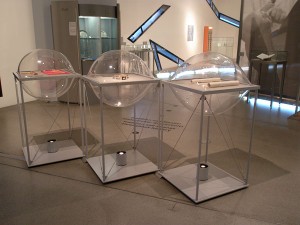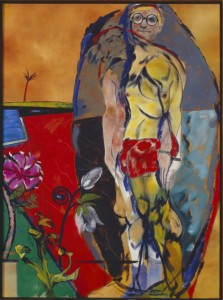 Eric Silverman’s long-awaited Cultural History of Jewish Dress was released last month in Bloomsbury’s prestigious fashion history series (formerly Berg). It brings up to date a subject which has long been in want of revision: Jewish clothing was last surveyed in 1967 – almost fifty years ago – by Alfred Rubens in A History of Jewish Costume. The scope of the book is broad, spanning three thousand years in regions and cultures as distant from one another as the Middle East, Russia, North Africa, Europe, and the USA.
Eric Silverman’s long-awaited Cultural History of Jewish Dress was released last month in Bloomsbury’s prestigious fashion history series (formerly Berg). It brings up to date a subject which has long been in want of revision: Jewish clothing was last surveyed in 1967 – almost fifty years ago – by Alfred Rubens in A History of Jewish Costume. The scope of the book is broad, spanning three thousand years in regions and cultures as distant from one another as the Middle East, Russia, North Africa, Europe, and the USA.
Drawing on the Torah, Mishnah, and Talmud, on a selection of secondary sources and newspaper articles in English, Silverman, a US-American anthropologist, chose an analytical rather than empirical approach. Instead of categorizing garments, he chronicles controversies fought over the ages about what Jews should and should not wear.
→ continue reading
In our permanent exhibition, there is a spot reserved for topics that are au courant: three prominently placed pot-bellied display windows that we call the “raviolis”.

“Ravioli” display windows in the permament exhibition © Jewish Museum Berlin, photo: Christiane Bauer
These display windows were filled once again with new exhibits for Purim, now. The new presentation looks at the festival from a feminist perspective and directs viewers’ attention to the latest developments substantially being shaped by Jewish women in the USA.
The focus of the presentation is on the two female characters of the Purim story that is read aloud at synagogue during the service: Esther and Vashti. Little attention has been paid to the latter for a long time. She was the first wife of the Persian King Ahasuerus, who cast her out because of her disobedience. He subsequently took the beautiful Jew Esther as a wife, who was shy and quiet, quite unlike the defiant Vashti. But over time Esther emerged from her reticence to transform into the courageous heroine we know, thwarting the conspiracy to murder the Persian Jews.
→ continue reading

R.B. Kitaj, The Neo Cubist, 1976-1987 © R.B. Kitaj Estate, Astrup Fearnley Collection, Oslo, Norway
On the 19th of October, just past 8 pm, I received the message “David is breaking away from his installation in Köln and will arrive at the Jewish Museum on Sunday 21st. between 11. – 11.30 am.”
Some time before, I had contacted the gallerist Peter Goulds to ask whether David Hockney might be interested in coming to Berlin to visit the R.B. Kitaj exhibition; I knew Hockney would be in Cologne to open his own exhibit “A Bigger Picture” at the Museum Ludwig. Though it seemed unlikely at first, Hockney was able to come. He brought his partner, his studio manager, and a chauffer, and appeared wearing an elegant grey double-breasted suit, a black Hawaii shirt with fantastic plants on it and a checked flat cap.
→ continue reading
 Eric Silverman’s long-awaited Cultural History of Jewish Dress was released last month in Bloomsbury’s prestigious fashion history series (formerly Berg). It brings up to date a subject which has long been in want of revision: Jewish clothing was last surveyed in 1967 – almost fifty years ago – by Alfred Rubens in A History of Jewish Costume. The scope of the book is broad, spanning three thousand years in regions and cultures as distant from one another as the Middle East, Russia, North Africa, Europe, and the USA.
Eric Silverman’s long-awaited Cultural History of Jewish Dress was released last month in Bloomsbury’s prestigious fashion history series (formerly Berg). It brings up to date a subject which has long been in want of revision: Jewish clothing was last surveyed in 1967 – almost fifty years ago – by Alfred Rubens in A History of Jewish Costume. The scope of the book is broad, spanning three thousand years in regions and cultures as distant from one another as the Middle East, Russia, North Africa, Europe, and the USA.
